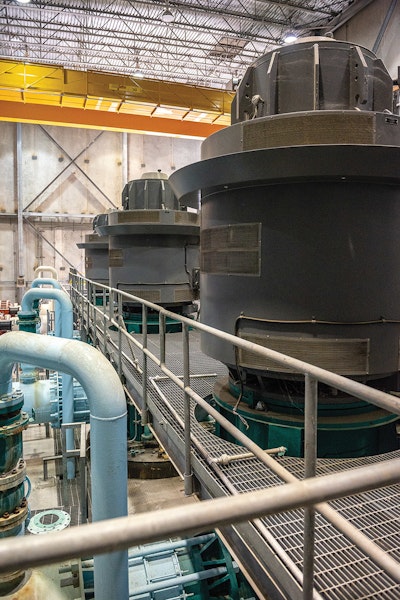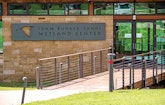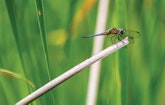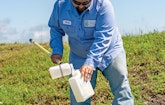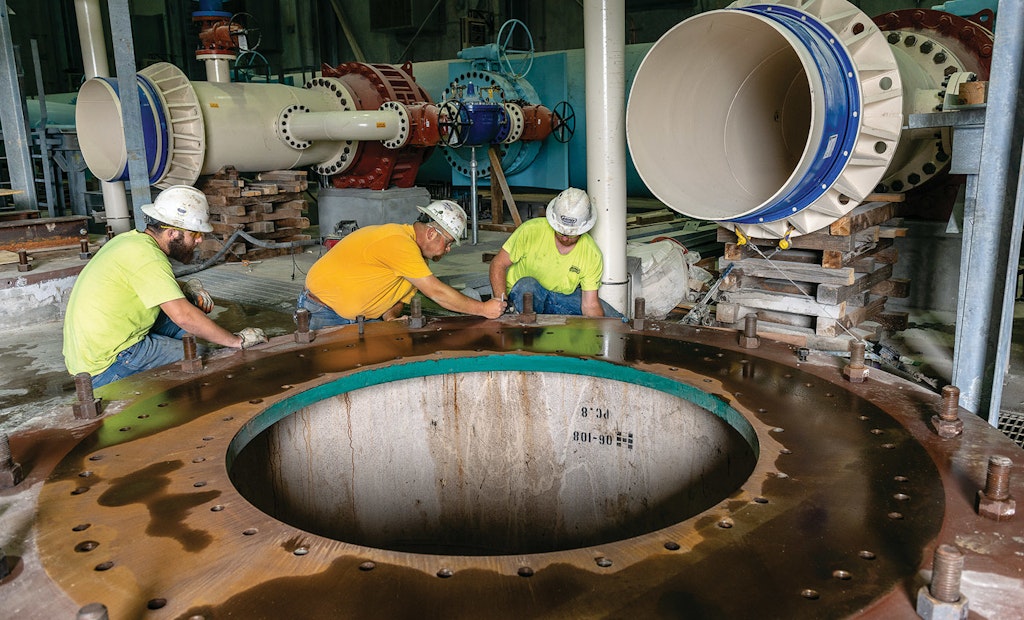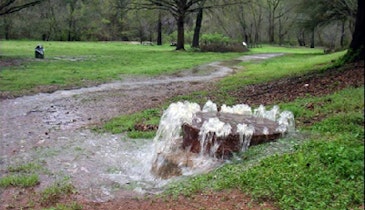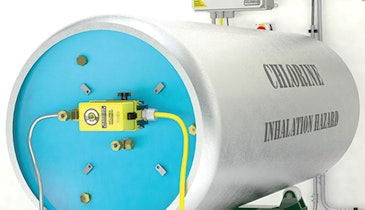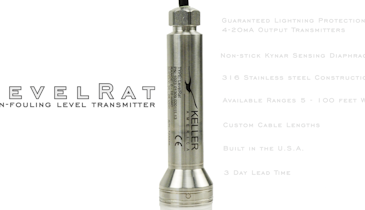Interested in Treatment?
Get Treatment articles, news and videos right in your inbox! Sign up now.
Treatment + Get AlertsOperators at the North Texas Municipal Water District oversee six water treatment plants with the capacity to deliver 840 mgd to some 1.7 million people in 80 communities north and east of Dallas, from booming suburbs to bucolic rural enclaves.
Meanwhile, five operators oversee the work of more than 1.3 million water-treating plants — plants rooted in one of the largest man-made water treatment wetlands in the United States. The East Fork Water Reuse Project sits on 2,535 acres of former ranchland along the East Fork of the Trinity River, 43 miles south of the district’s main facilities.
The water treated at the East Fork project passes through settling ponds to clear suspended solids and then through the wetland cells to reduce its nutrient load before it is piped north to the district’s original surface water resource, Lake Lavon.
The polished water produced by the wetlands adds the equivalent of up to 91 mgd to the district’s raw-water capacity, roughly equivalent to the yield of a new reservoir the district recently received state permission to build. And Mike Rickman, the district’s deputy director for operations and maintenance, says the wetlands will be able to nearly double production with a new pipeline from the main branch of the Trinity River that was to come online this summer.
Dealing with drought
Leaders at the regional utility district have long faced the challenge of supplying enough water to support a rapidly growing area that is expected to more than double in population by 2050, just a few years shy of the 100th anniversary of the state law that established the district. At its inception, the district included 10 cities with a combined 30,000 population. The membership now stands at 13 cities, many among the state’s and even the nation’s fastest-growing cities.
In Texas, where long droughts are a fact of life and surface water resources are precious, large utilities are forced to look far and wide for water rights. They often tap into distant reservoirs built after battles over land rights, water rights, environmental issues and politics. It can take decades to secure permits to build such reservoirs, and the arduous process deters many projects.
Rickman, who retired after 33 years at Dallas Water Utilities, continued his career by joining the leadership team at the North Texas district 16 years ago and brought with him an idea on how to bolster the district’s water resources without building a lake. It was a concept already being studied by the Tarrant Regional Water District, which provides water and flood control to more than 2.1 million people in the Fort Worth metro area just west of Dallas.
When Rickman joined the North Texas district, the Tarrant utility was in the second stage of testing the feasibility of an engineered wetland project on 2,022 acres of state-owned land just north of the Richland Chambers Reservoir. That project, which opened shortly after the East Fork project, was the first of its kind proposed in the U.S. Both projects were designed and built by the Alan Plummer Associates environmental engineering firm.
Rickman, who lives just a few miles from the East Fork project, used to drive past the site on his daily commute. When the possibility of tackling a wetland project arose, he approached the manager of the 5,000-plus-acre ranch that is one of five large Texas ranches owned by the Caroline Hunt Trust Estate. “That’s when I learned that they wanted to do a wetlands project, too,” he says.
During talks that led to the construction of the East Fork project, Rickman learned that John Bunker Sands, the son of Caroline Rose Hunt and Loyd Bowmer Sands, had begun working on restoring wetlands and creating new ones on three of the family’s ranches. At the Seagoville ranch, Sands had overseen the construction of a series of levees to retain water and promote the return of plant life and wildlife native to the river bottoms area that comprised much of the ranchland. So when talks began with the water district, the ranch had already established some wetlands on a much smaller scale.
Boosting reliability
Both the North Texas and Tarrant wetland projects use gravity, sunlight and nutrient-hungry native plants to polish close to 100 mgd of murky water from separate branches of the Trinity River. Both the East Fork and the West Fork of the Trinity are comprised mostly of treated wastewater discharged upstream. Since the flows depend so heavily on wastewater — rather than rainfall — the projects are considered more reliable sources than reservoirs, which can be drawn down well below optimum intake levels during serious droughts.
“It is drought-proof,” Rickman says. “It kind of puts a wide spot in the line for us.”
Rickman oversees the operation of all North Texas district facilities from the raw water intakes on four basins to the effluent outlets at 14 wastewater treatment plants. He calls the East Fork wetlands a water treatment facility because river water is its source. “The wetlands is totally different from the water treatment plant process. You’re more into agriculture and farming than you are into treating the water. In a traditional plant, you’re using filters, mechanical treatment and chemical treatment. At the wetlands, you’re giving nature the time to do the work.”
The reuse part of the project’s name stems from the complicated calculations that allow the district to take more water from the river than its permits allowed before the project was built. The amount of water diverted to the wetlands is directly tied to the volume of water from other basins that the district’s wastewater plants discharge to the East Fork basin.
The additional capacity of the wetlands is coming into play with the completion of the district’s Main Stem Pump Station project, which can convey up to 100 mgd from the main fork of the Trinity River north to the intake structure at the East Fork Wetlands.
The new, 17-mile, 72-inch pipeline connecting the Main Stem facility to the wetlands was scheduled to open this summer. The water will be treated effluent purchased from the Trinity River Authority, the state-established agency that governs water usage in the full Trinity River basin from its origins in North Texas to its mouth at the Gulf of Mexico.
Even if the East Fork project produces more polished water than is needed now, the extra capacity will be welcome. Levels at Lake Lavon have generally run well below capacity. “If Lavon has the capacity to store it, we’ll supply it,” Rickman says. So far, the wetlands water has not affected lake levels, largely due to the district’s need for raw water. As fast as the wetlands put water into the lake at one end, it is drawn out at the other end for treatment.
About half of the original ranch outside the wetlands plot is still owned and operated by Rosewood Ranches. The family trust also remains a partner in a project that uses the wetlands as a teaching tool for students and adults. Rosewood and the North Texas district partnered to create the John Bunker Sands Wetland Center, which includes an education building and a boardwalk into the heart of the wetlands, giving visitors a close-up look at the water treatment process.
First stage: Settling
The major mechanical infrastructure at the East Fork project involves two pump stations, one at the diversion station that lifts water out of the river and one at the end of the wetlands where the water is turned around and pumped north to Lake Lavon.
The diversion station has four Pentair - Fairbanks Nijhuis pumps, all powered by GE motors. Two pumps have 250 hp motors and are rated at 16,810 gpm at 40 feet of head. Two more pumps have 500 hp motors and are rated at 33,620 gpm at 40 feet of head. A fifth submersible pump can be used during low-flow periods to move enough water — 9,000 gpm — to keep plants alive during severe conditions.
All four of the main pumps can run at once, but at present, based on permitted volume, three operate and one is held in reserve. Although the pumps can move up to 91 mgd on an annual average, the wetlands are designed to treat and supply up to 150 mgd to the lake.
The diversion station lifts incoming water to the level of three sedimentation basins, each able to handle 50 mgd in the first polishing stage. Water entering the basins is generally the color of chocolate milk, but it looks crystal clear by the time it moves on. During regular operations, one sedimentation basin is operating, one is drying and one is held in reserve.
The sedimentation process is thorough, but the operators and engineers are not concerned about the basins filling too quickly with sediment. “We believe we will only need to clean them every 15 to 20 years,” Rickman says. When it’s time clean the ponds, Rickman expects no problems disposing of the sediment because the wetlands treat “nothing more than river water that meets state standards.”
Final treatment
Once most suspended solids are settled, operators use sluice gates and gravity to direct water to the final treatment stage, a series of shallow wetlands cells. Twenty-one native plant species are there, including bulrushes that dominate the landscape and submerged aquatic plants. They consume phosphorus, nitrogen and other nutrients in the river water.
Arranged in essentially a grid formation, the 24 wetlands cells are separated by earthen berms and connected by gated channels. The gates allow operators to direct the flow in order to manage and maintain individual cells. The average water depth in the cells is 18 inches, but there are deeper strips to give the plants room to grow and allow the sun’s ultraviolet rays to add their cleansing assistance.
The cells range from about 9 to 156 acres. The median-size cell is 64.45 acres and the median volume is 35.5 million gallons. Six distribution/collection channels run through the grid, covering a total of 45 acres. Overall, more than 1,800 acres of the 2,535-acre East Fork project site are covered in water.
Long journey
It takes water seven to 10 days to travel the 3.5 miles from the inlet to the end of the wetlands. By the time the water reaches the conveyance pump station, more than 90% of the sediment, 80% of the nitrogen and 65% of the phosphorus are gone.
The conveyance station is equipped with three Goulds Water Technology, a Xylem brand, pumps powered by 3,500 hp GE motors to send the wetlands product north to Lake Lavon via a 104-inch pipeline. The pumps are each rated at 25,463 gpm at a head of 380 feet.
Although the clearwater is not ready for drinking when it leaves the wetlands, it is considered polished and at least as clean as the water it joins in Lake Lavon. Rickman says the predominance of the discharged wastewater that supplies the wetlands does not concern him because of the tight controls on the quality of effluent from wastewater treatment plants.
On top of that, he notes, “Lavon is already the most tested and most monitored lake in Texas.” And the testing data shows no decrease in the quality of the lake’s water in the decade since the wetland project was put online. The polished water enters the lake at its northern end and spends about a year in the reservoir before it reaches the district’s intake structure at the south end.
From there, the water is directed to the Wylie Water Treatment Plant, the district’s main facility, comprised of four plants built at different stages since 1956. The newest facility, Plant IV, was built in 2008, but a recent upgrade has added 70 mgd to its original 140 mgd capacity. The expansion will make it the third largest of the plants on the Wylie site; Plant II and Plant III each can produce 280 mgd.
Timely completion
Construction of the East Fork project began in 2004, and Rickman notes that its completion in 2009 was timely: It was coming online just as access to 28% of the district’s raw water supply was being suspended.
The loss came after the Texas/Oklahoma state line passing through Lake Texoma was adjusted in 2000, effectively moving the district’s intake structure into Oklahoma. When zebra mussels were discovered in Lake Texoma in 2009, the district fell under federal laws that restrict the interstate transfer of water from sources infested by the mussels.
The district was unable to tap its rights to Lake Texoma water for nearly five years until it completed a $300 million, 46-mile pipeline carrying the lake’s water directly to the Wylie Water Treatment Plant, where it must be cleared of any mussels before it is mingled with water from other basins. That new pipeline and treatment facility cost $300 million, more than the $246 million the district invested in the East Fork project.
Meanwhile, the district’s newly permitted Bois d’Arc Lake reservoir project will cost $1.6 billion and yield 108 mgd, about the same volume of raw water as the East Fork project. Bois d’Arc Lake, the first new Texas reservoir to get a permit in 31 years, will cover 16,641 acres and take up another 17,000 acres for mitigation.
That’s substantially more land than the East Fork wetlands required, and for a similar amount of capacity. It’s further testimony to the value of the wetlands project.
